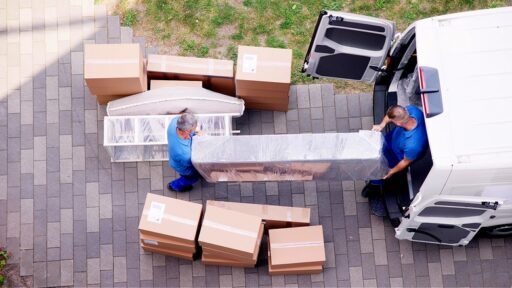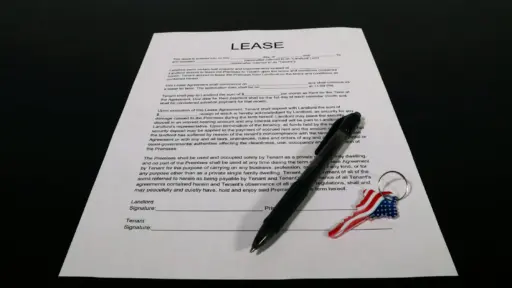When disaster strikes, few things offer the kind of peace of mind and recovery support that homeowners insurance does. Whether a fire guts your home, a storm tears off the roof, or a thief breaks in and makes off with valuables, having the right protection in place can mean the difference between devastation and recovery. While nobody expects the worst to happen, it’s exactly that unpredictability that makes this coverage so essential.
Homeowners insurance works as a financial safety net for one of your biggest investments—your home. It covers structural damage, personal property losses, liability claims, and sometimes even temporary living expenses if your home becomes uninhabitable. Most people don’t fully realize how much they rely on this protection until a crisis happens. That’s when the true value of homeowners insurance becomes clear.
Understanding the Basics of Homeowners Insurance
Homeowners insurance generally combines several types of coverage into one policy. These typically include:
- Dwelling coverage, which pays for repair or rebuilding costs if your home is damaged or destroyed by a covered peril such as fire, wind, or vandalism.
- Personal property coverage, which helps replace belongings like furniture, electronics, and clothing.
- Liability protection, which covers you if someone is injured on your property or if you accidentally damage someone else’s property.
- Additional living expenses (ALE), which reimburses you for the cost of living elsewhere while your home is being repaired or rebuilt.
This layered protection is what makes homeowners insurance indispensable. Without it, the cost of rebuilding, replacing, or paying legal bills would be entirely on your shoulders. Most mortgage lenders also require you to carry homeowners insurance as a condition of the loan because it protects their financial stake in the property.
Common Disasters and How Insurance Responds
Each disaster brings its own set of challenges. Fires can reduce a home to rubble, floods can destroy basements and ruin electrical systems, and windstorms can topple trees or rip apart siding and roofing. While not every disaster is covered under a standard policy—floods and earthquakes often require separate policies—most common incidents are.
Fire is among the most feared household disasters, and homeowners insurance typically covers fire damage extensively. This includes structural damage and the cost of replacing damaged possessions. Water damage, such as from burst pipes or an overflowing washing machine, is usually covered too, though insurance does not typically cover damage from rising floodwaters unless you have flood insurance.
Wind and hail damage are also common, especially in regions prone to hurricanes or tornadoes. In those areas, insurers may charge higher premiums or impose separate deductibles, but coverage is still typically available. Theft, vandalism, and even damage from vehicles crashing into your home can also fall under standard homeowners insurance.
What matters most is knowing the scope of your policy. Every insurance plan outlines what it will and won’t cover, and homeowners should review these details carefully before disaster strikes.
Why Timing and Documentation Matter
The moment disaster hits is not the time to start reading your policy for the first time. Understanding what your homeowners insurance covers in advance is crucial. After a damaging event, you need to act quickly to document the damage, file a claim, and start repairs. Insurers often require photographic evidence, receipts for lost items, and assessments from contractors.
Keeping an up-to-date home inventory is one of the best ways to make sure your claim process goes smoothly. This inventory should include photos or videos of your home’s contents, descriptions, purchase prices, and receipts when possible. Store this information in a cloud-based system or a secure off-site location to ensure access if your home is destroyed.
Having this kind of documentation speeds up the claims process and helps you get a fair settlement. Homeowners insurance adjusters will evaluate your losses, but the more information you can provide, the better your outcome is likely to be.
Living Expenses After a Disaster

When a disaster forces you out of your home, the last thing you want to worry about is hotel bills, restaurant meals, or laundry costs. That’s where the “loss of use” or “additional living expenses” coverage in homeowners insurance comes into play. This part of your policy pays for the extra costs of maintaining your standard of living while your home is being repaired.
For example, if your house is uninhabitable due to smoke damage, your policy may cover hotel stays, transportation costs, and even meals. This coverage is often overlooked until it becomes necessary, but it can be a major financial relief during a stressful time.
Just as with any claim, you’ll need to save receipts and keep records of all expenses related to your temporary living arrangements. Insurers typically set daily or total limits for these costs, so it’s important to understand how much you’re eligible to receive.
Liability Protection You Might Not Expect
Homeowners insurance doesn’t just protect your property—it also shields you from liability. If someone trips and falls on your icy driveway or your dog bites a visitor, you could be held legally responsible. Liability coverage pays for legal defense, medical bills, and even court-awarded damages if you’re found liable.
This part of your policy can be invaluable, especially in today’s litigious world. Legal fees alone can escalate quickly, and liability coverage helps ensure that a single accident doesn’t threaten your financial future.
In some cases, liability protection even extends beyond your property. For instance, if your child accidentally damages school property or you accidentally injure someone away from home, your policy might cover those incidents too. It’s smart to review your liability limits and consider umbrella coverage if you want additional protection.
What Isn’t Covered by Standard Policies
While homeowners insurance offers broad protection, it doesn’t cover everything. Flood damage, for instance, requires a separate flood insurance policy through the National Flood Insurance Program or a private insurer. Earthquakes are also excluded from most standard policies and need their own coverage.
Wear and tear, pest infestations, mold, and neglect-related issues are typically excluded. Insurance is designed to cover sudden and accidental losses, not long-term maintenance problems. That means it’s up to you to maintain your home and fix issues like leaky roofs or plumbing before they cause bigger problems.
It’s also worth noting that high-value items like jewelry, fine art, or collectibles may not be fully covered under standard limits. In those cases, you’ll need to purchase additional endorsements or riders to ensure full protection.
Tailoring Your Policy to Your Needs
Not all homes are the same, and not all policies should be either. If you live in a high-risk area for wildfires, hurricanes, or crime, your homeowners insurance should reflect that risk. It’s not just about having coverage—it’s about having the right coverage.
Review your policy at least once a year and whenever your circumstances change. If you remodel your home, add a room, or purchase expensive electronics, your coverage needs will change. If local building codes change, your policy should account for the increased cost of rebuilding to new standards.
Many insurers offer optional endorsements that can enhance your protection. Guaranteed replacement cost coverage, for example, pays the full cost to rebuild your home—even if it exceeds your policy limit. Ordinance or law coverage helps pay for upgrades required by building codes. These add-ons often make sense in areas where rebuilding costs are high or regulations are strict.
The Role of Deductibles and Premiums
Understanding your deductible—the amount you pay out of pocket before insurance kicks in—is crucial. A higher deductible can lower your premiums but may lead to higher costs if you file a claim. On the flip side, a lower deductible offers quicker financial relief but often comes with a higher premium.
Finding the right balance depends on your financial situation and risk tolerance. If you have enough savings to comfortably handle a larger deductible, you may save money in the long run with lower premiums. But if cash flow is tight, a lower deductible might make more sense.
Your insurance premium is influenced by many factors: your home’s location, age, construction type, and your claims history. Security systems, smoke detectors, and other safety features can help reduce costs, while living in a high-risk area may drive them up. Shopping around and comparing quotes is the best way to ensure you’re getting good value for your money.
When to File a Claim—and When Not To
While homeowners insurance is there to protect you, that doesn’t mean you should file a claim for every minor issue. Frequent claims can cause your premiums to rise or even lead to policy cancellation. If the cost of repairs is close to or just above your deductible, it may be smarter to handle it out-of-pocket.
Reserve insurance claims for significant losses or situations where you can’t afford the repair. Always consult your agent before filing a claim to understand the potential impact on your policy and rates. A good agent can help you assess whether a claim makes sense or if you’re better off handling the issue yourself.
Filing too many claims in a short period can raise red flags with insurers. It’s best to use your policy for its intended purpose—protecting you from unexpected and significant financial losses—not as a catch-all solution for routine maintenance or minor repairs.
The Value of a Trusted Agent or Broker
Choosing the right homeowners insurance is not a one-size-fits-all decision. An experienced agent or broker can help tailor your policy to fit your unique needs, making sure you aren’t over- or under-insured. They can explain confusing policy language, walk you through endorsements, and help you make informed choices.
Agents are especially helpful during the claims process. If you’ve suffered a major loss, having a knowledgeable advocate in your corner can ease the burden and ensure you receive the compensation you deserve. They can guide you on documentation, claim forms, and even recommend contractors or specialists to assist with repairs.
Working with someone who understands your local risks—whether that’s hurricanes in Florida or wildfires in California—ensures your homeowners insurance is built to withstand the most likely threats.
Long-Term Peace of Mind
The real strength of homeowners insurance isn’t just in the policy—it’s in the peace of mind it brings. Knowing that you have a backup plan if disaster hits allows you to enjoy your home without constant fear of financial ruin. Whether you’re safeguarding your family’s primary residence or protecting a vacation property, this insurance is the backbone of homeownership security.
Financial stability, quick recovery, and continued shelter are all part of what homeowners insurance provides. While the cost may seem like just another monthly bill, it represents a commitment to long-term resilience and recovery. It’s about more than rebuilding structures—it’s about restoring lives.
When you invest in homeowners insurance, you’re not just protecting walls and windows. You’re ensuring that when life turns upside down, you’ll have the resources to start again. And in today’s unpredictable world, that protection has never been more important.







